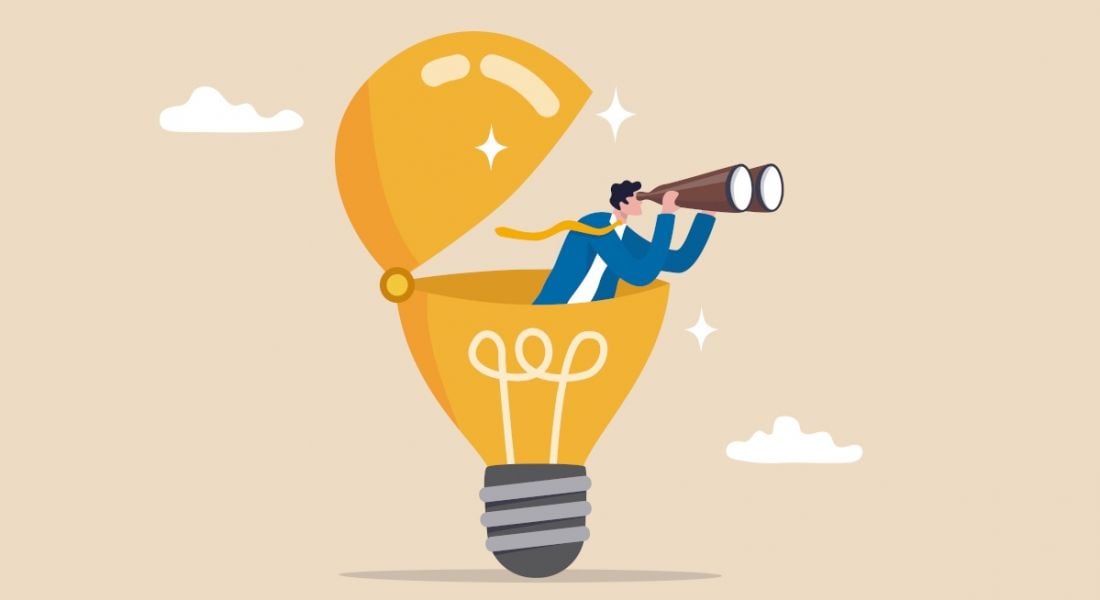Author and Hatch Analytics founder Monica Parker explains the importance of curiosity and wonder at work and how to maintain it.
Overwhelmingly, people want to work for humble, empathetic leaders and be a part of open, trusting, supportive teams. We have all heard the saying that people don’t leave their jobs, they leave their bosses, and with good reason. Leaders have an outsize impact on employee satisfaction, and managers set the tone of an organisational culture.
In one 2018 study, of those employees who had what they believed to be great bosses, 94pc of respondents said they had passion and energy for their job as opposed to only 59pc of those with reportedly bad bosses.
What makes a good boss? Humility, empathy, honesty, patience, compassion, authenticity and selflessness – all characteristics that are enhanced by the emotion of wonder.
Each of us has experienced wonder. It’s as universal an emotion as happiness and fear. Everyone knows the goosebumpy feeling we get viewing a grand vista or seeing a child take their first steps. While it’s not something we typically associate with the workplace, we should.
Wonder is an emotional experience that makes us feel like a small part of a bigger system and that sense of smallness increases our tendency towards the very prosocial, or helping, emotions that we associate with good leadership.
This psychological phenomenon, also known as small-self, precipitates a decrease in self-interest and shifts attention and behaviour away from our own needs and onto the needs of others – obviously a great attribute to have in a manager or team member.
As a complex emotion, wonder is a composite of other emotions – openness, curiosity, absorption and awe, and in the workplace, arguably, curiosity, or ‘to wonder’, is the most important of these elements. Through curiosity, wonder at work manifests itself as openness to different ideas, deep exploration of new thinking and the emotional intelligence to compassionately consider what those around us may be thinking and feeling.
We spend countless hours seeking and consuming information, the majority found on the internet, which also happens to be a facilitator of much of our society and economy. Also known as exploratory behaviour, curiosity plays a valuable role in our psyches.
Cicero once described curiosity as an “innate love of learning and of knowledge … without the lure of any profit”. Einstein so revered curiosity he called it “holy curiosity”, adding, “I have no special talents. I am only passionately curious”.
Curiosity is a quality we share with other animals, and they primarily express their curiosity through what is known as an “exploration-exploitation trade-off”. This means they spend about 20pc of the time exploring for new opportunities and information, and the other 80pc exploiting that knowledge.
But human curiosity is more than just this trade-off. Why else would we explore just for the fun of it? Wonder-type curiosity is a purely human trait aligned with the very human need for sense-making. Our brains evolved to create everything from the great pyramids to the Mona Lisa to the smartphone, but this level of cognitive development is only made possible by curiosity for the enjoyment of it and not just as an exploration-exploitation trade-off.
Wonder-type curiosity has a raft of benefits. Beyond making us more helpful, considerate and flexible leaders, it increases innovation, decreases bias and improves wellbeing. Curious people are also happier, less stressed and more comfortable with ambiguity. In contrast, the absence of exploratory behaviour is associated with an increased risk of everything from self-harm and body dysmorphia to groupthink, prejudice and low empathy.
We tend to become less curious as we age because we erroneously perceive there is less to be curious about. Although age naturally blunts our curiosity, the trait can still be honed on an exploratory whetstone. While it requires some effort, understanding how to bolster curiosity is a valuable lifelong skill. Here are three key steps we can take to increase wonder-type curiosity.
Slow down
When we’re stressed or rushed, we lean heavily on our cognitive shortcuts and seek quick answers that are not mentally taxing. We don’t want to explore ideas more deeply or look for nuance that may lead to ambiguity. And this makes sense – when our brain is frazzled, we don’t have time for open curiosity. We want to avoid uncertainty and find fast, fixed, simple answers. To feel comfortable leaning into curiosity, we need to reduce our stress levels and hurriedness.
Slow-thought activities like meditation, narrative journaling or even daydreaming help quiet our chattering mind, encouraging greater wonder-type exploration. Also helpful is limiting fast media consumption, like social networks or constant breaking news, which tend to over-index urgency for viewership. Tapping into curiosity is not easy under stress, but slowing down and keeping an open, cognitively flexible mindset helps us find equilibrium.
Be curious about people, not just ideas
People who embody the wonder trait of curiosity tend to be more engaged, infuse more excitement into meeting new people, and are more likely to seek and build on what they learn about a person. In design-thinking methodology, empathising with the user is the first stage, and that requires wonder-type curiosity about others and their needs. In fact, scientists believe that a likely evolutionary precursor of empathy was curiosity about others and that kind of curiosity supports humble, responsive leadership.
One study on curiosity had strangers ask each other personal questions and found that those who showed genuine curiosity in their questioner were rated friendlier and more attractive. Research also indicates highly curious people appear to be less affected by social rejection, making them less hesitant to socially engage. All this contributes to more cohesive team dynamics, greater inclusivity and a feedback loop toward even deeper curiosity.
Seek novelty
Our brains pay attention to new things and reward that attention with dopamine. Furthermore, novelty is one of the reasons we find it so hard to stop multitasking – switching from task to task feels good. Novelty contributes to greater plasticity in the hippocampus, the part of the brain responsible for storing memories for long-term recall, hence why novelty is so effective in learning. Curiosity thrives on incongruity, and we notice, recall and are motivated by newness.
So, take different routes, go to different places. Shake up your noggin a bit. Merely changing the lighting or temperature in a space can make it feel novel or new. Even wearing your watch on the other wrist can get you out of a mental rut. Most critically, begin to train yourself and your team to see with fresh eyes.
Try to answer poet Rainer Marie Rilke’s entreaty: “To be always beginning.” Think of the wide eyes of a newborn as they see everything literally for the first time. Embrace the Zen precept of shoshin, which translates as “the beginner’s mind”. Be open, drop your preconceptions and seek new possibilities. As Zen master Shunryu Suzuki observed, “In the beginner’s mind, there are many possibilities, but in the expert’s, there are few.” Stop trying to be an expert at life. Revel in the wonder of a beginner.
Monica Parker is the founder of Hatch Analytics and the author of The Power of Wonder.
10 things you need to know direct to your inbox every weekday. Sign up for the Daily Brief, Silicon Republic’s digest of essential sci-tech news.




